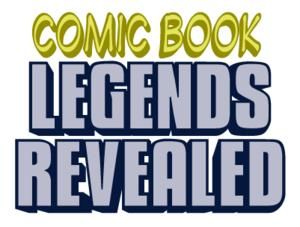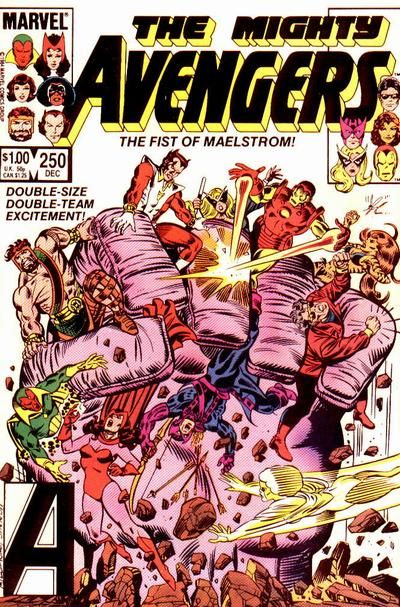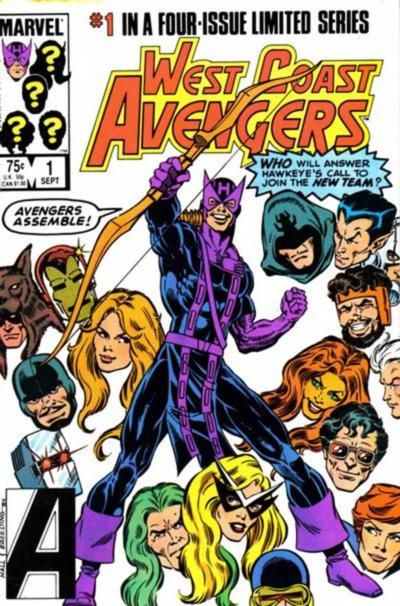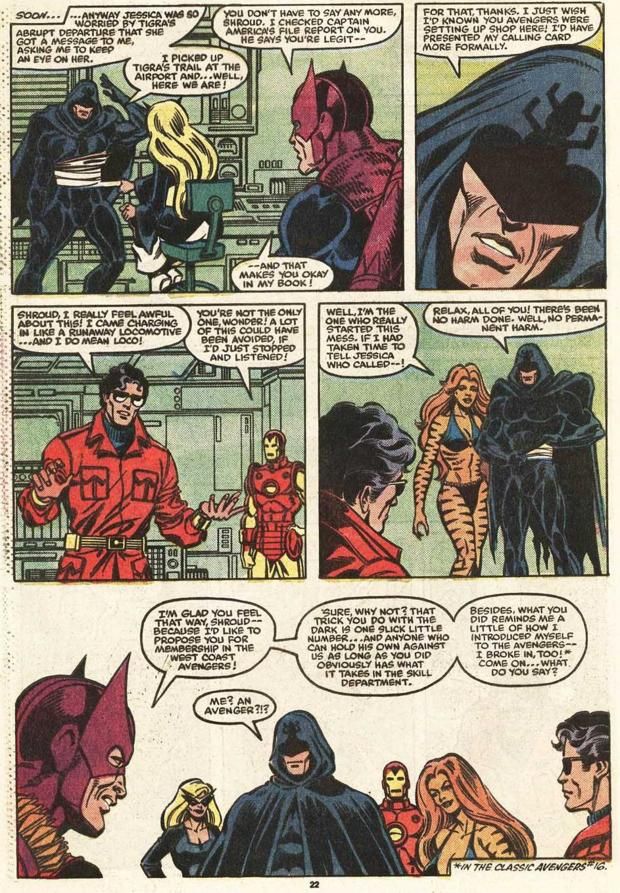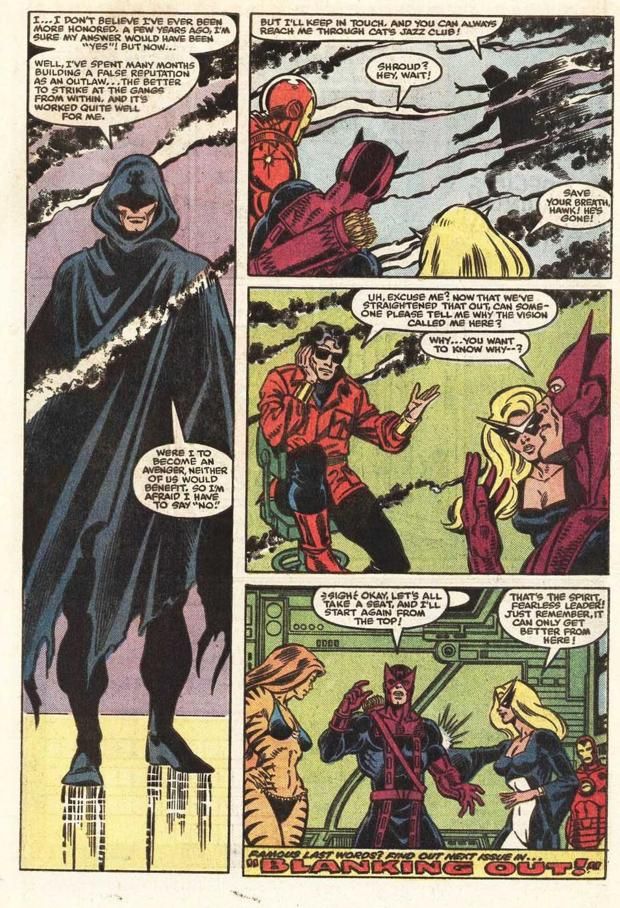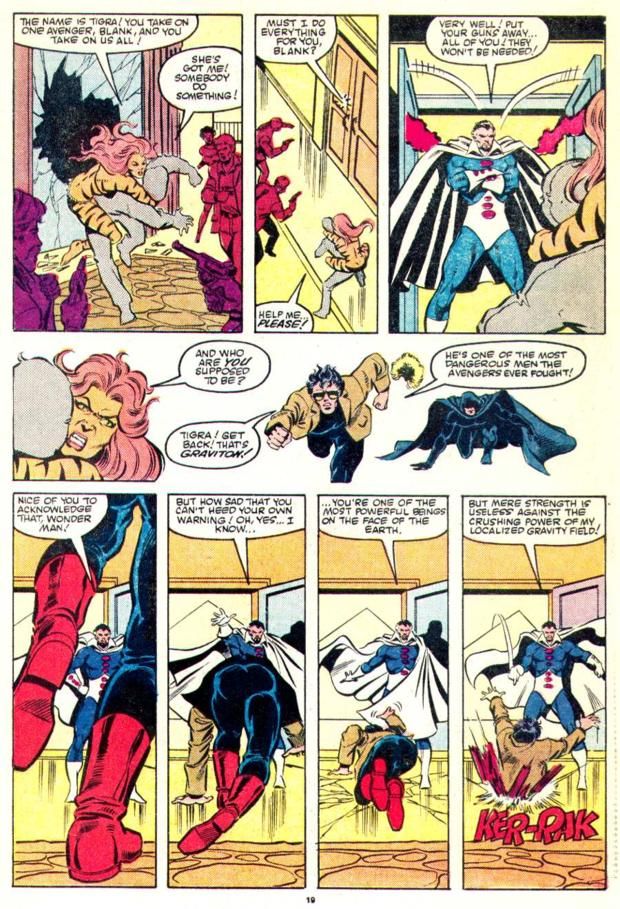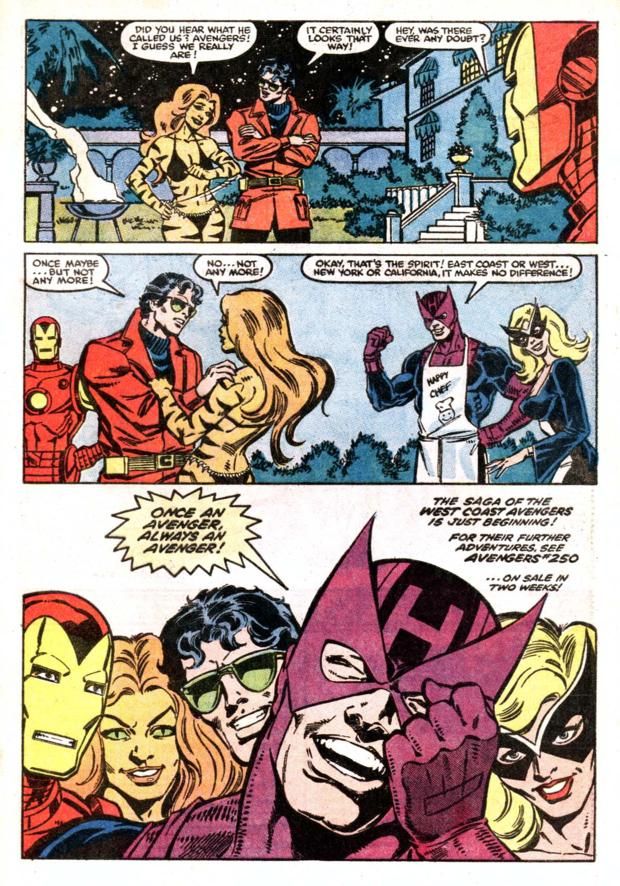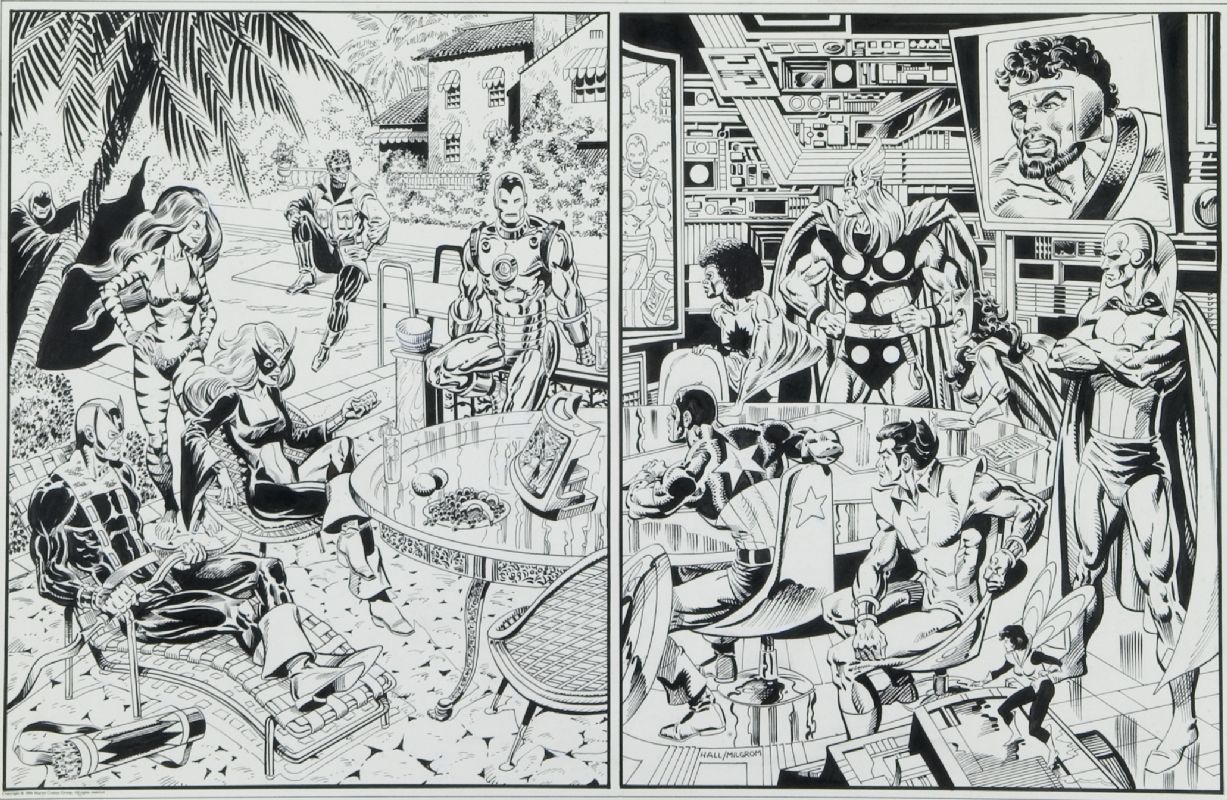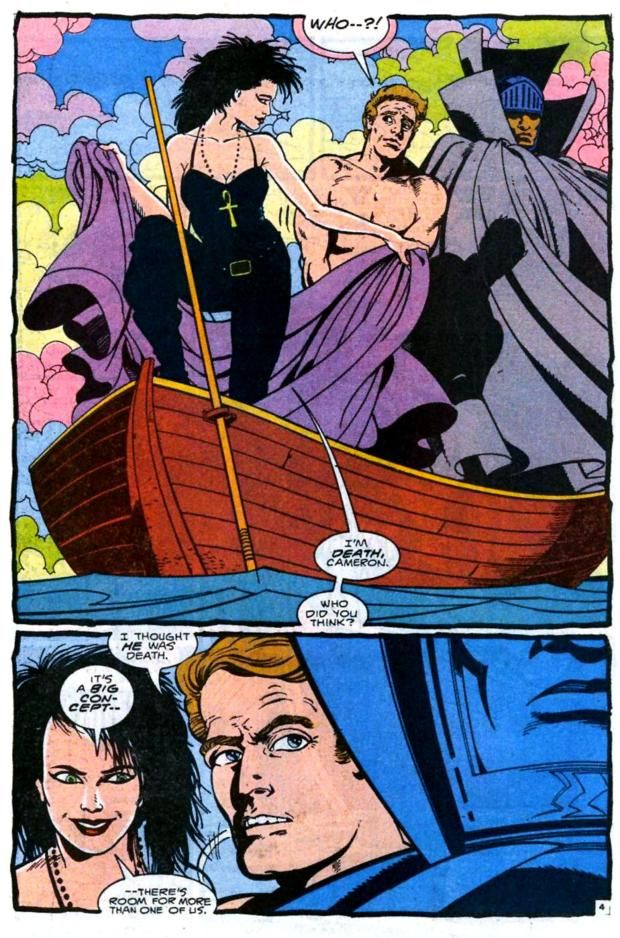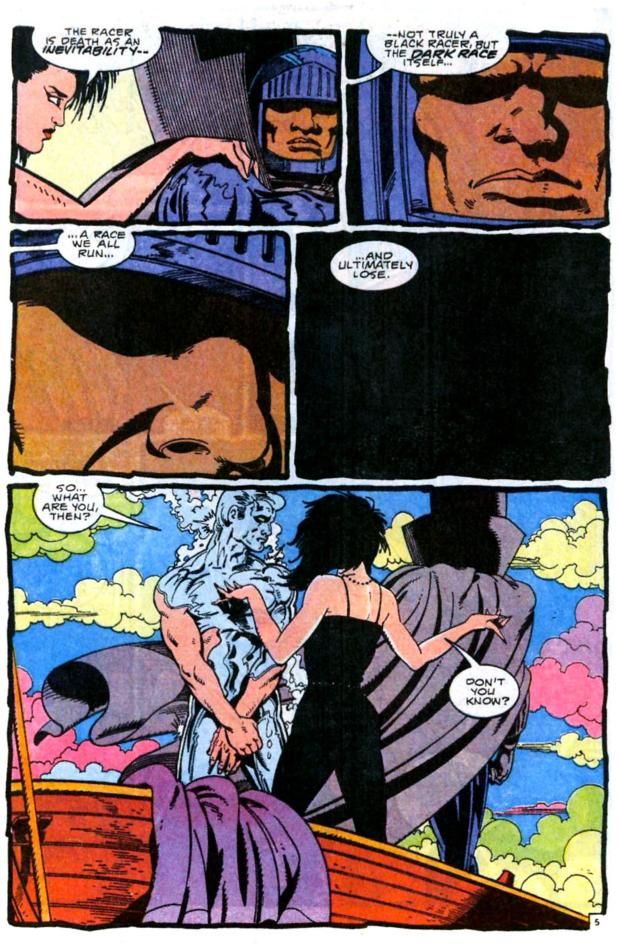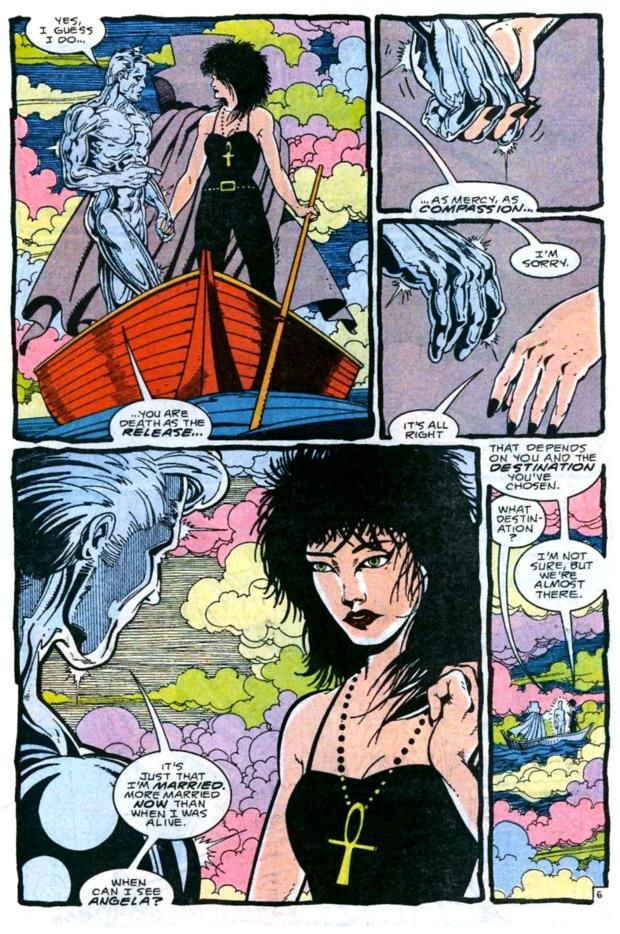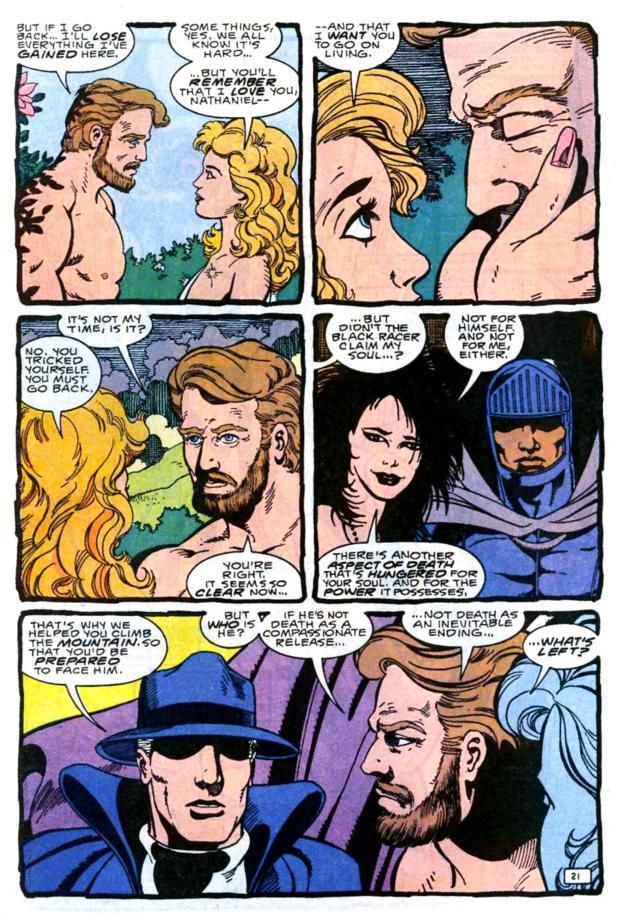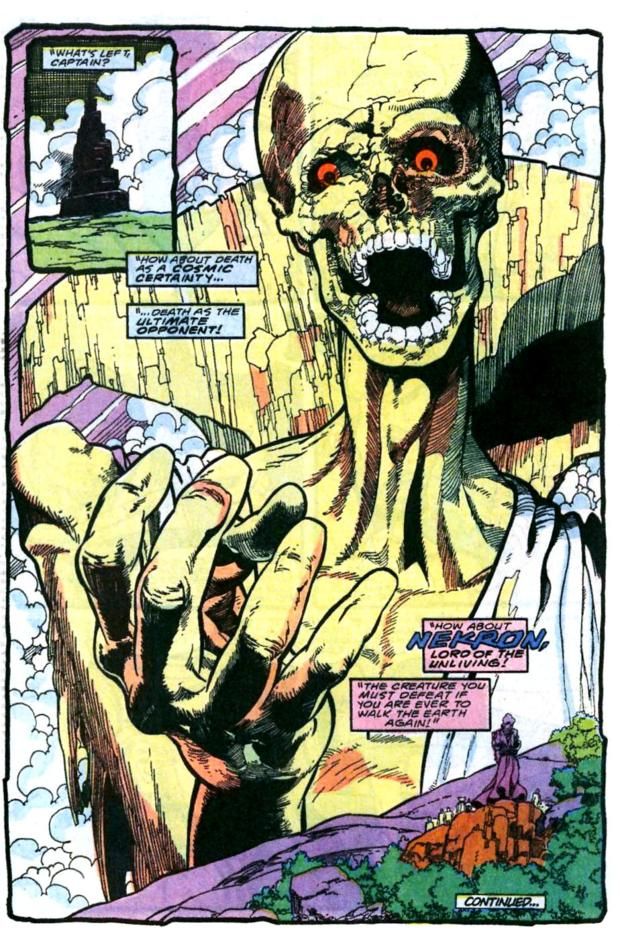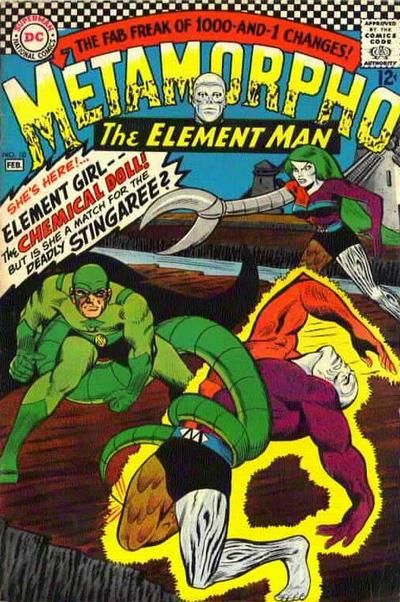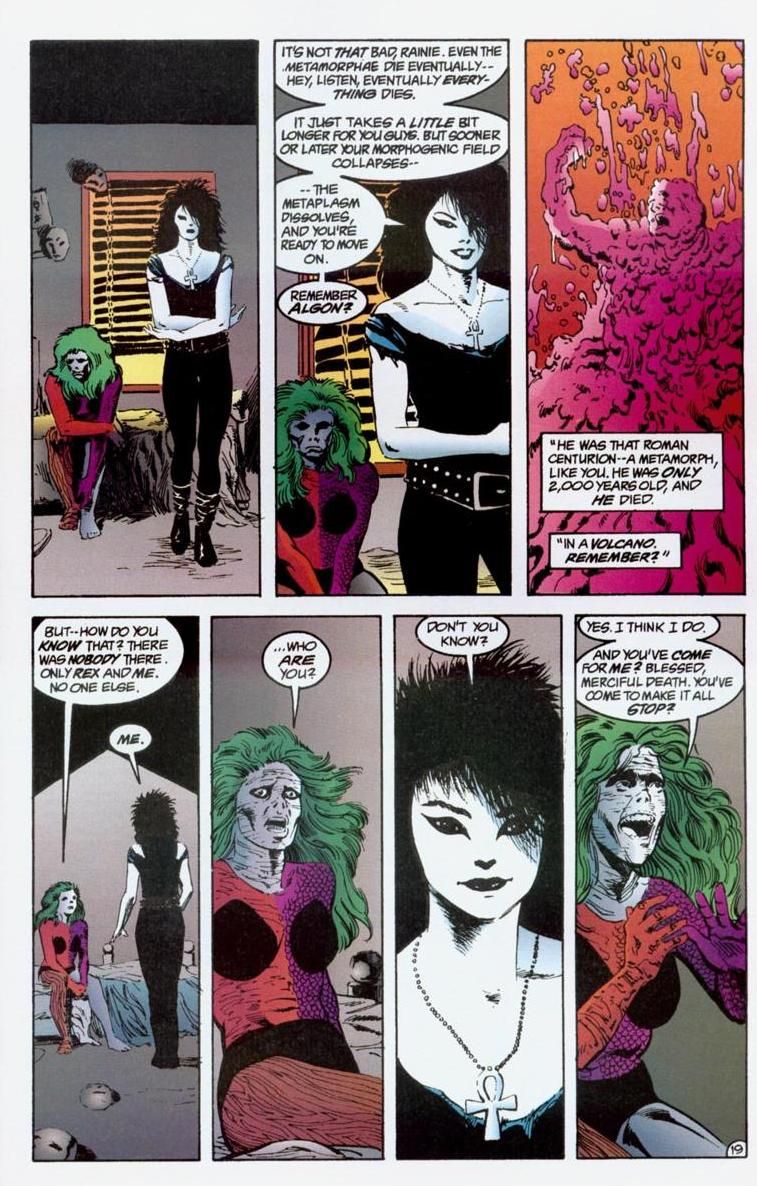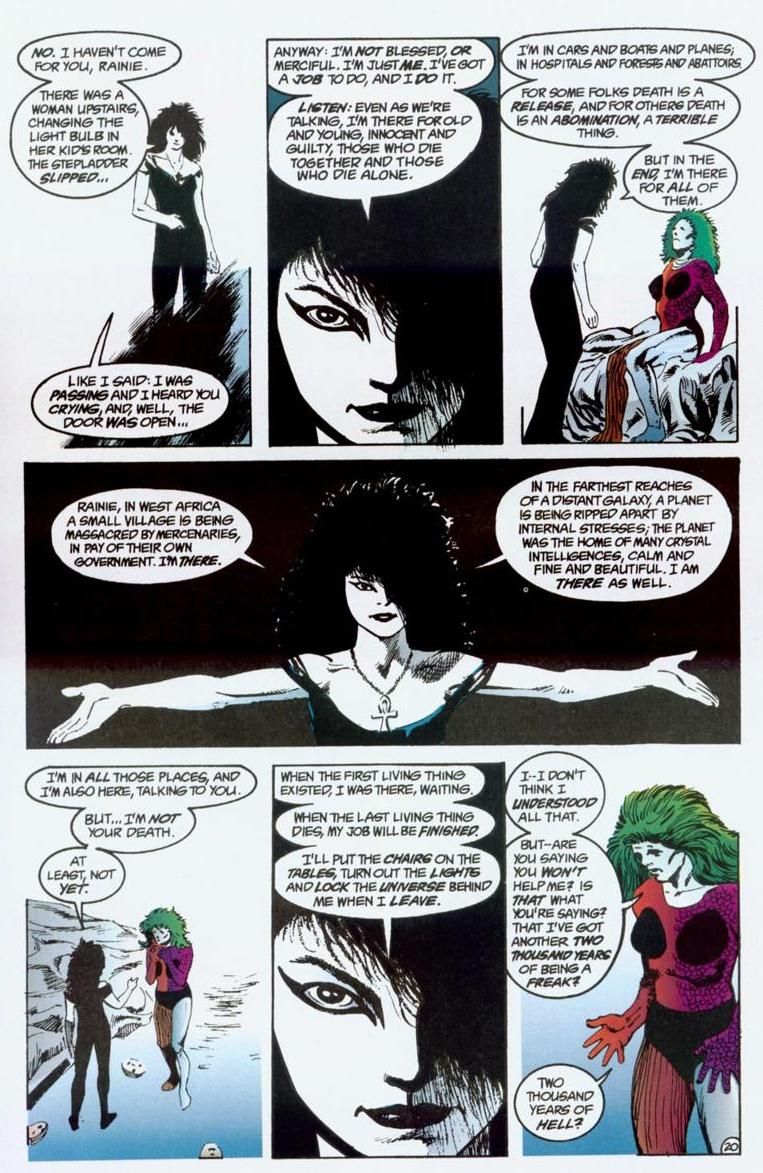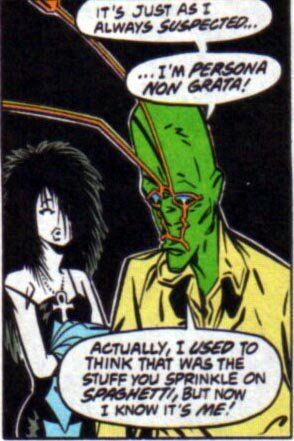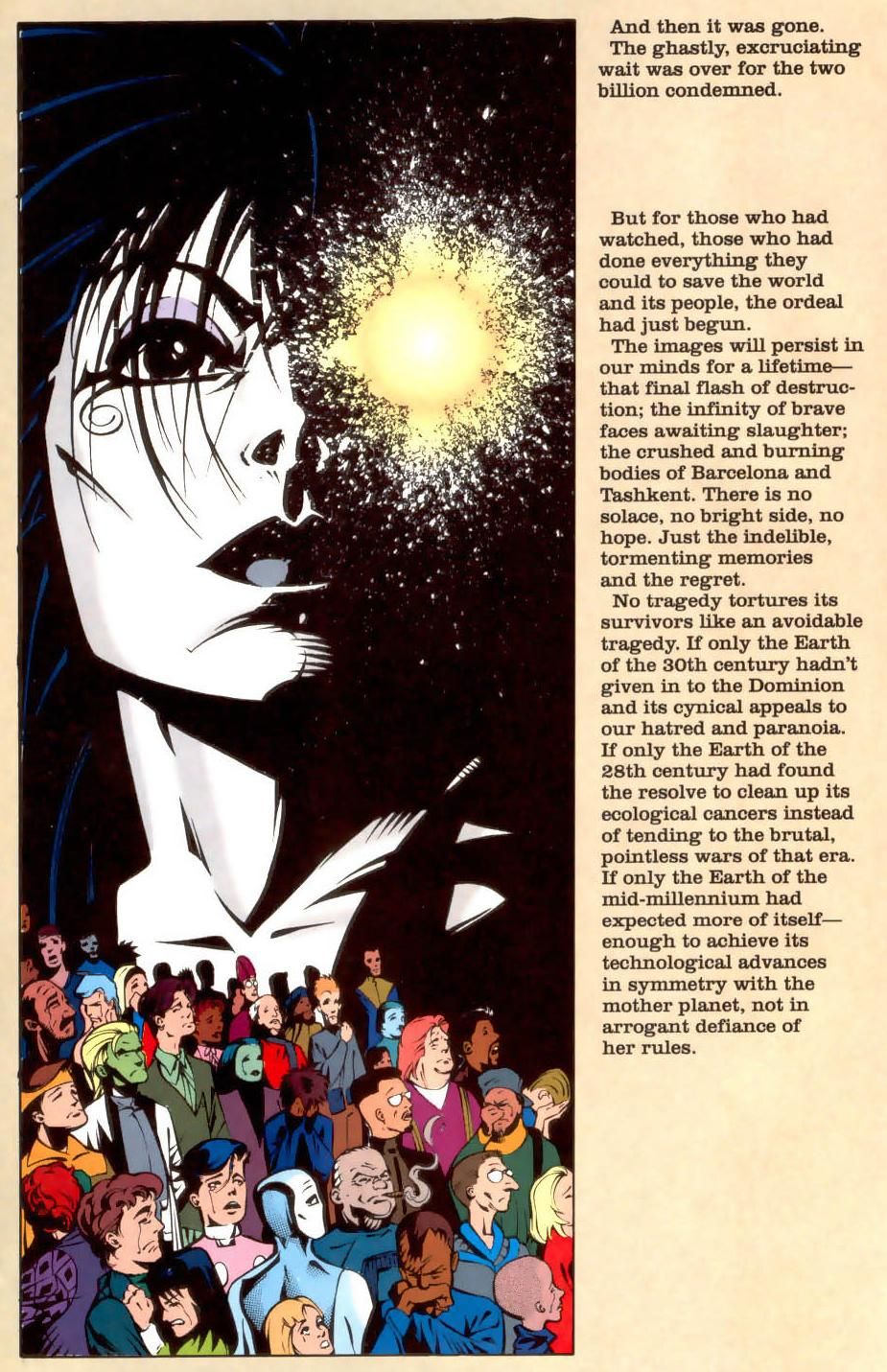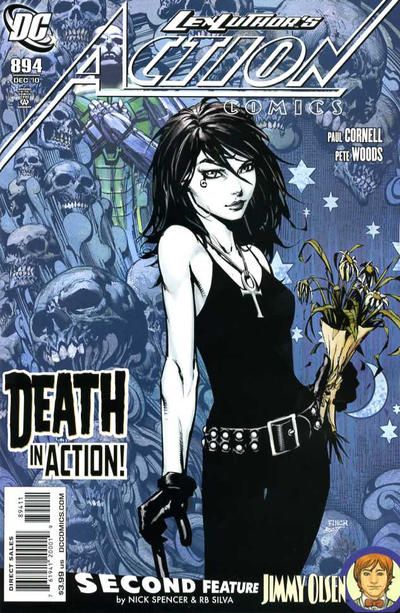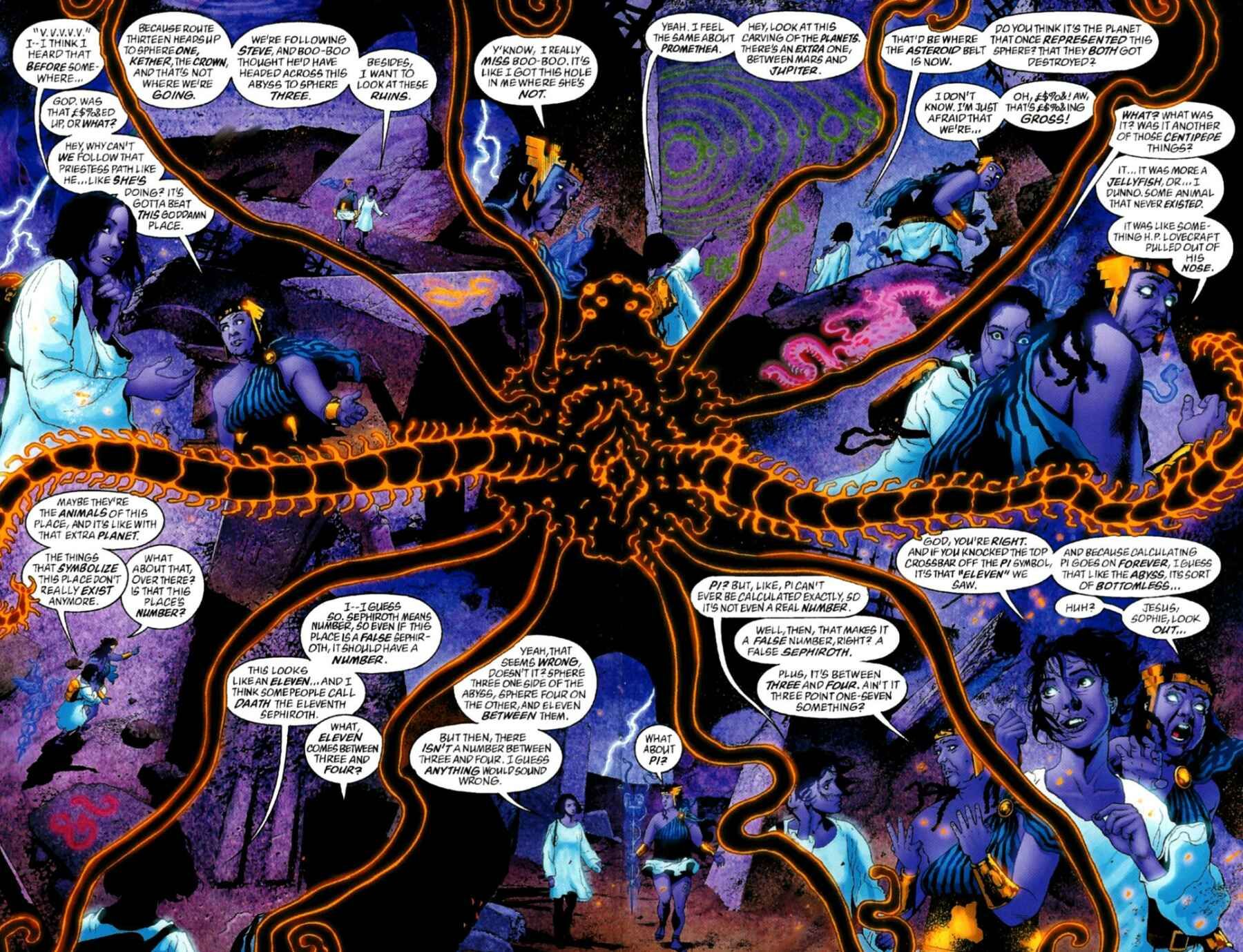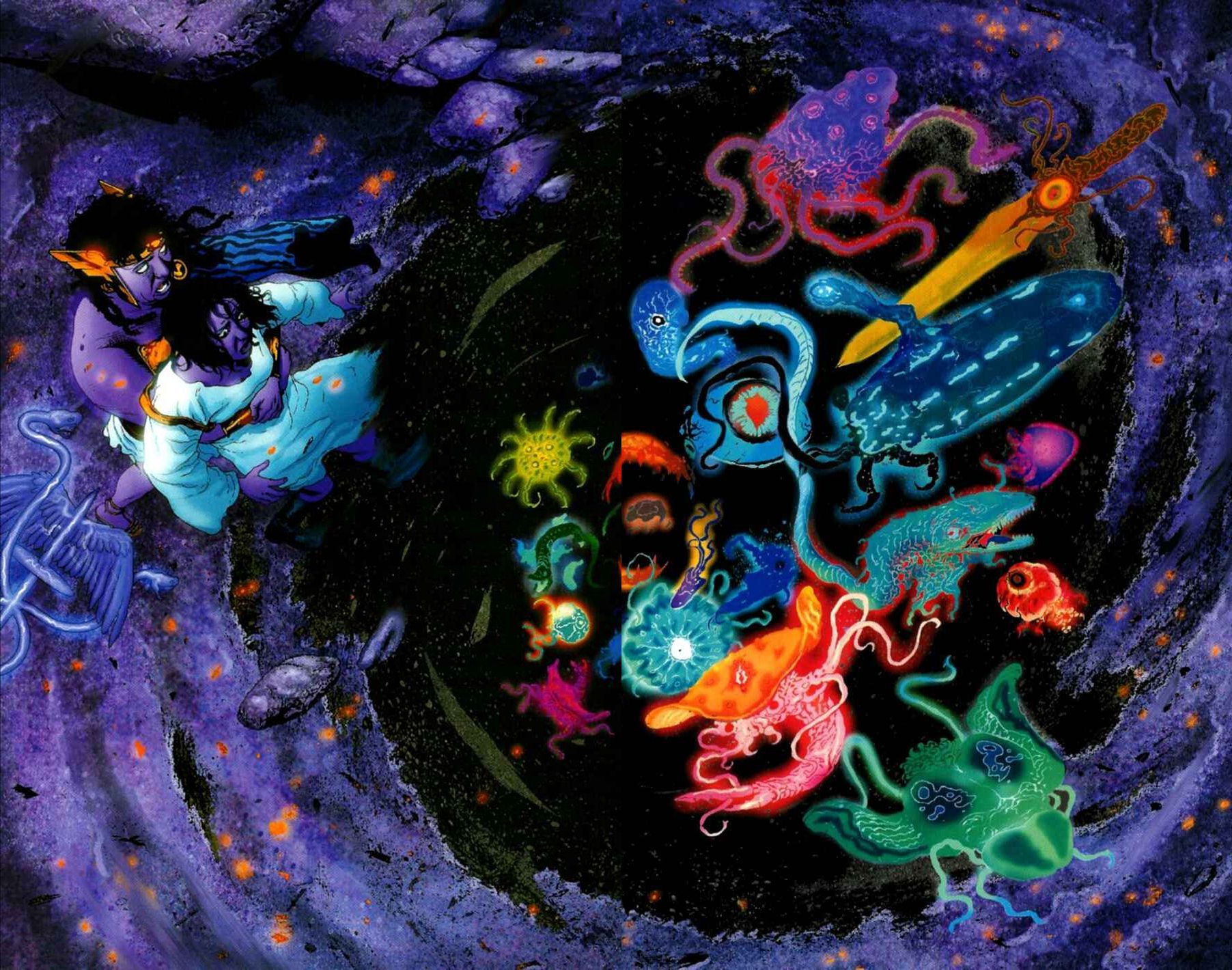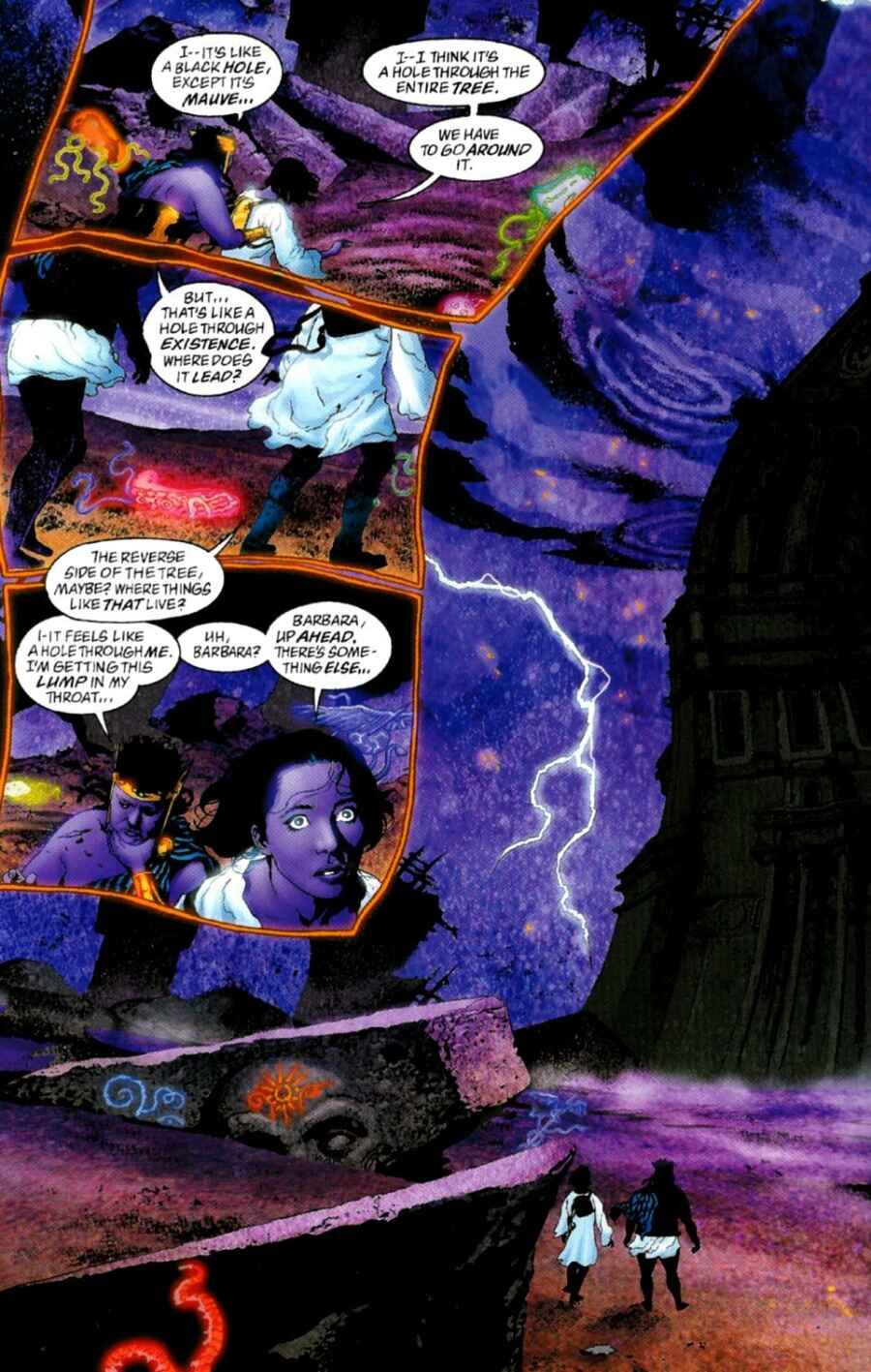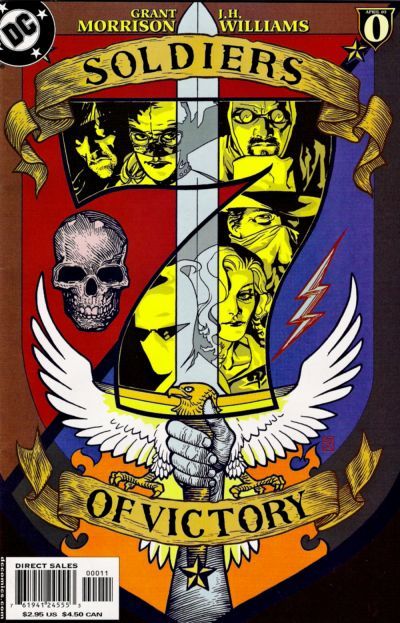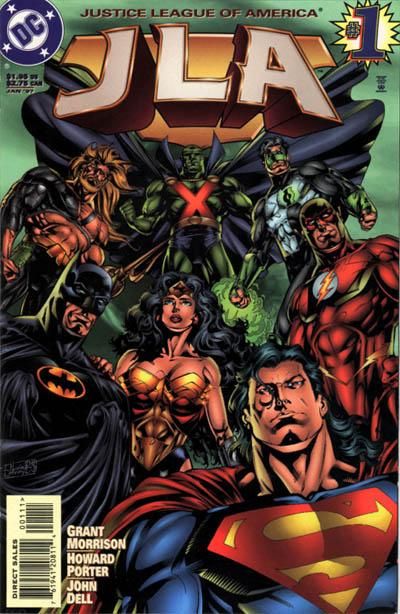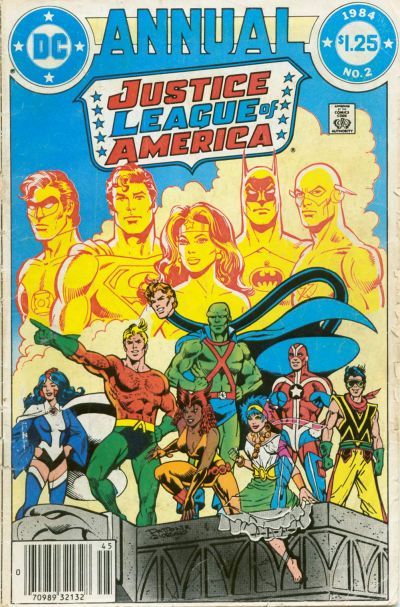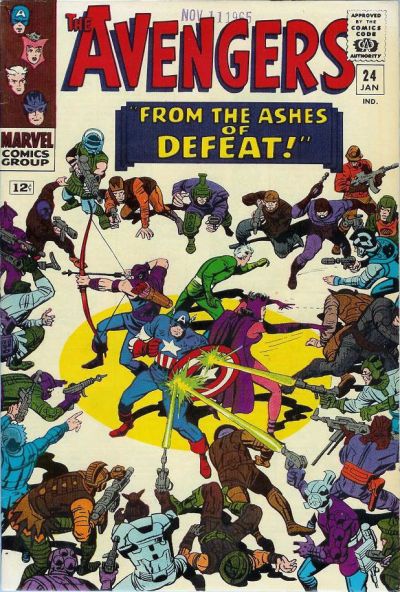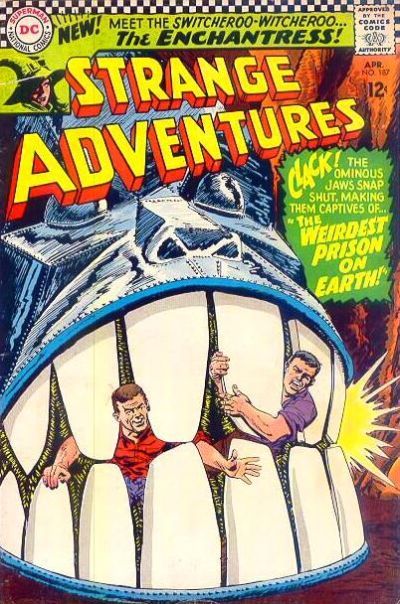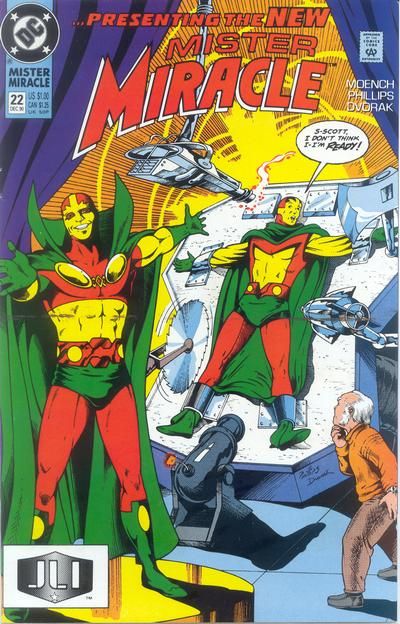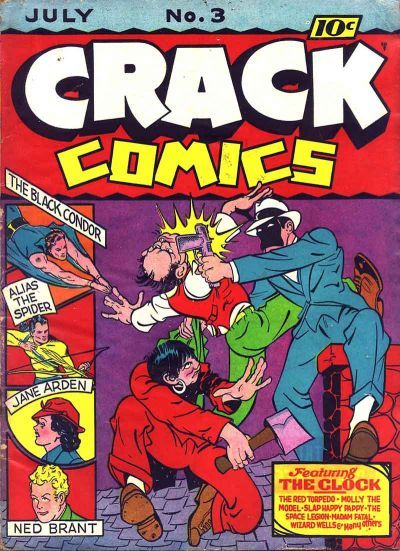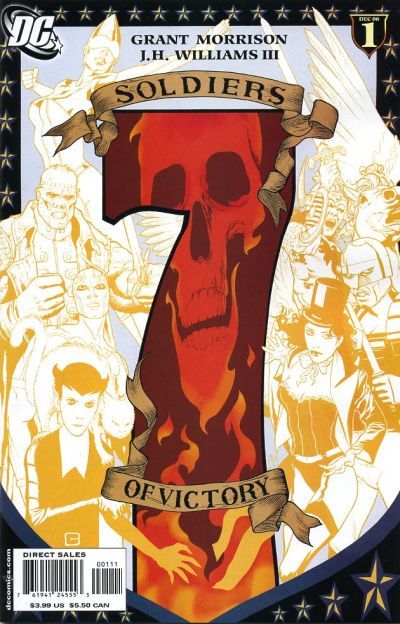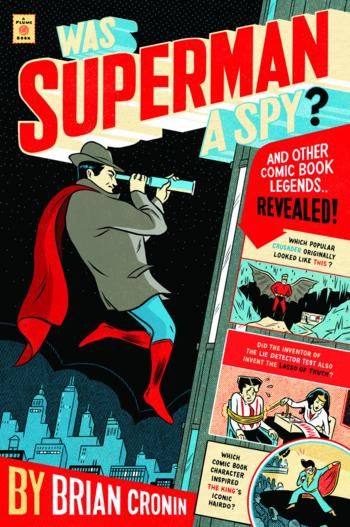Welcome to the three hundredth in a series of examinations of comic book legends and whether they are true or false. Click here for an archive of the previous two hundred and ninety-nine.
Comic Book Legends Revealed is part of the larger Legends Revealed series, where I look into legends about the worlds of entertainment and sports, which you can check out here, at legendsrevealed.com. I'd especially recommend you check out this installment of Theater Legends Revealed to learn about the alternate ending Ibsen wrote to A Doll's House...to give it a happy ending!! Plus, learn the astonishing manner in which the classic Edward Albee play, Who's Afraid of Virginia Woolf? was treated by the Pulitzer Prize committee!
Follow Comics Should Be Good on Twitter and on Facebook (also, feel free to share Comic Book Legends Revealed on our Facebook page!). If we hit 3,000 followers on Twitter, you'll have the option to get a bonus edition of Comic Book Legends the week after we hit 3,000. So go follow us (here's the link to our Twitter page again) to get that extra Comic Book Legends Revealed! Not only will you get updates when new blog posts show up on both Twitter and Facebook, but you'll get original content from me, as well!
Since this is the 300th installment of Comic Book Legends Revealed, this week you will get more than TRIPLE the regular amount of legends! In fact, we're taking up the entire weekend with Comic Book Legends Revealed! Yesterday was Part 1 (which you can find here) and the third part is posted here. The special theme this week is that there is one legend related to each one of the Top Five Writers and Top Five Artists from our recent Top 100 Comic Book Writers and Artists countdown! So that's a total of ten legends! And all about the biggest names in comics! In fact, Part 3 on Sunday will contain perhaps my most requested legend of all time! So be sure to come by tomorrow to get the full experience of Comic Book Legends Revealed #300!
Let's begin!
COMIC LEGEND: George Perez drew a non-Avenger into his Avengers 30th Anniversary Poster then removed him 11 years later.
STATUS: True
George Perez was #4 on the Top 50 Comic Book Artists countdown.
In 1984, the first West Coast Avengers comic book came out. It was a four-issue mini-series written by Roger Stern and penciled by Bob Hall with inks by Brett Breeding (and Peter Berardi in the fourth issue). You see, at the time, the book was intended to only introduce the West Coast team (including who else besides Hawkeye and Mockingbird would round out the roster). Stern's original intent was that he would just have the regular Avengers title feature both teams depending on the storyline (perhaps even mix and match team members as the situation called for it). Stern's approach was evident in the first story following the end of the mini-series, Avengers #250.
However, the mini-series was so popular that Marvel decided to make it an ongoing. Of course, they did so without the creative team behind the mini-series, Stern, Hall and Breeding. Instead, newly re-signed to Marvel Steve Englehart was given the assignment, with the art team of the Avengers, Al Milgrom and Joe Sinnott, taking over the new book. This, of course, was decided after Stern had already plotted out a year's worth of stories in Avengers with the two teams working together that he had to scrap.
In any event, as you might imagine, besides the five team members, Englehart did not keep anything from Stern's plots (and even there, James Rhodes was the Iron Man in the mini-series while Tony Stark would be the Iron Man in the new series). That's to be expected, really.
One character who ended up getting dropped from the book as a result of this was the Shroud.
Seen on the first issue of West Coast Avengers #1 as an option to be a member of the team...
Shroud shows up in the issue (he was tracking down Tigra as a favor to Jessica Drew, thereby following up plotlines from the old Spider-Woman series that Stern had dealt with recently in the pages of Avengers) and is actually offered the sixth spot on the team.
But he turns Hawkeye down.
Shroud, though, appears in three of the four issues of the mini-series. Here he is in #3 teaming up with Wonder Man against Graviton...
At the end of the series, though, it is clear who the members of the West Coast team are...
But Stern definitely intended on Shroud being a recurring guest star, and who knows, maybe he would have ultimately joined the team. But when Englehart took over, despite actually being the guy who invented the Shroud, Englehart did not use him at all.
But back when Marvel was promoting the series, Bob Hall and Al Milgrom did a promotional poster...
As you can tell, Shroud is intentionally put to the side, to show his connection to the team without showing him as an actual MEMBER of the team (by the way, anyone have a color jpeg of this poster?).
However, as you might imagine, this was kind of confusing. It's a poster of the Avengers and he's on there. So perhaps due to this (or whatever other reasons) a list was made up of members of the Avengers and it was given to George Perez to draw for his awesome 30th Anniversary Poster in 1993 (with Tom Smith on colors).
It's an amazing piece, even if so many of the characters are wearing their 1993 look, which is pretty awful in a lot of their cases (like Namor and Scarlet Witch, for two).
But, naturally, the Shroud is on there.
Little mistake, not a big deal, but what amuses me is that 11 years later, Marvel decides to begin to collect Kurt Busiek and George Perez's Avengers comics into a series of hardcovers called Avengers Assemble.
To celebrate the first one, they asked Smith to re-color the poster for inclusion in the hardcover using computer color. I thought Tom Smith removed the Shroud, but Smith says that Perez must have. Sorry, Tom! So Perez removed Shroud.
Check it out (Dynamic Forces put out a lithograph of the revised poster, using the humorous "41st Anniversary" tagline)...
Thanks to Tom Smith for the correction on who took out the character!
COMIC LEGEND: Neil Gaiman reneogiated his contract with DC so that his permission would be needed if anyone ever wanted to use Death because he was angered over the usage of Death in an issue of Captain Atom.
STATUS: False
Neil Gaiman was #3 on the Top 50 Comic Book Writers countdown.
Reader Hector wrote in awhile back to ask:
Hey, I came across a message board post referencing an appearance of Death [in an issue of Captain Atom] not written by Neal Gaiman. The poster says that Gaiman hated the story. I dug around a bit and found several references, but no sources. I also read that the story about Death and the Metamoprho girl was a direct response to that Captain Atom issue, to clarify Death's role and that Gaiman renegotiated his contract so DC would need to ask his permission to use the characters. Did Gaiman really complain about that story? And do you know how his unusual arrangement (at least at the time) about the use of his characters with DC happened?
The issue in question is July 1990's Captain Atom #42, written by Cary Bates and Greg Weisman, penciled by
Rafael Kayanan with inks by Romeo Tanghal.
In the issue, the good Captain finds himself, well, dead. The Black Racer is with him and while on the River Styx, Captain Atom meets someone else...
They accidentally mis-colored Death, by the way. That was not intentional.
Later in the issue, it turns out that Captain Atom is not REALLY dead, his body is just possessed by a bad guy, so he has to fight ANOTHER aspect of Death...
Anyhow, Weisman's editor, Denny O'Neil, ran the issue past Sandman editor Karen Berger, and she approved the usage (Destiny also appeared in the issue). In addition, Weisman, writing about the incident, noted:
I tried to be faithful, and even intentionally vague. Death never says what she is. Captain Atom guesses at her function and at her relationship to the other "death" figures (i.e. the Racer and Nekron). No one in the issue says that he guessed right. So even if what he said was completely off-base, there's still nothing in the issue that contradicts anything that was established about the Endless. At least not to my mind. One can always choose to believe that Captain Atom was simply wrong.
That's mostly in response to the notion that Gaiman was angry about the characterization of Death as the compassionate aspect of Death.
However, that was not Gaiman's issue with the story. I asked him about it and he stated that he was not angered by the incident, he simply felt:
I just felt it confused things -- she wasn't an "aspect" of Death. She was Death. When one day Nekron or the Black Racer stops existing, she'll be there to take them.
If the script or lettered comic had been run by me back then I would have noticed the continuity issues and corrected them. As it was, it wasn't a big deal: it was a fine comic as far as it went, but it tried to shoehorn Death into DC Continuity and got it wrong. So I clarified matters in Sandman 20.
In Sandman #20, Death interacts with an old supporting character from Metamorpho's comic book, Urania Blackwell, the Element Girl.
In the issue, Blackwell (who had not even been referenced in over twenty years at that point) wants to kill herself, but can't think how someone who can transform her very elements can actually die. So when she meets Death, she thinks that Death is the answer...
Now, after her appearance in Captain Atom, Death also appeared in a couple of Keith Giffen-penned comics, Ambush Bug: Nothing Special #1 (September 1992)
and Legion of Super-Heroes #38 (December 1992).
Chris Eckert over at Funnybook Babylon said about Death's appearance in the Ambush Bug issue:
Supposedly this issue, alongside an earlier cameo by Death and Destiny in Captain Atom led Gaiman to request that no one be allowed to use the Endless, unless given his express permission.
I asked Gaiman about it, and he said that never happened.
Writers nowadays DO ask Gaiman for permission before they use Death, like Paul Cornell in the recent issue of Action Comics...
but it is a courtesy rather than a necessity.
Thanks to Hector for the question, thanks to Greg Weisman for sharing his take on the situation and thanks to Neil Gaiman for his! Thanks to Chris Eckert, too, for the quote!
COMIC LEGEND: Alan Moore warned J.H. Williams III before Williams was about to draw an issue of Promethea that the issue might bring bad luck with it, and Williams ended up going to the emergency room while drawing it!
STATUS: True
J.H. Williams III was #3 on the Top 50 Comic Book Artists countdown.
J.H. Williams III was the artist on Alan Moore's Promethea, and he really did an amazing job on the series.
The longest storyline in Promethea was a trip through the Kabbalah Tree of Life. This one storyline took up basically a third of the series, issues #13-25.
Well, halfway through the trip, in Promethea #20, by Alan Moore, J.H. Williams III and Mick Gray, we come to the darkest point of the story. Check it out...
In an interview with the Sardinian Connection, Williams tells a bizarre story about the issue:
When working on the abyss issue, where the characters have to cross a great dark divide in order to reach the highest forms of reality, they had to make it through a destroyed reality, Alan had called to warn me about possible physical dangers I might face while working on this issue. While he was writing this particular issue he had become very ill and became better upon completion of the script. He was convinced this was due to the thoughts on this negative reality becoming manifest physically. He actually experienced many of the sensations the characters did in the story. So he thought it best to warn me that strange things could occur while drawing.
As I worked on the issue and got closer and closer to the middle of the issue where we show this black hole in the reality that leads to the inverse negative Tree Of Life, I began to not feel well and started having chest pains. The closer I got to drawing this black hole scene the worse my chest pain became, to such a degree I went to the emergency room to get looked at by a doctor. They ran an EKG test, among others, to see if maybe I was having a heart attack. After all of the tests were done the doctor couldn't find an explanation for what was occurring. During this time I had kept working on the issue. As I got past the drawing of the black hole scene and started to reach the end of the issue all of my chest pain and feeling bad went away without any further incident.
When Mick was inking that issue I remember him saying that everyone in his house came down with the flu or cold virus or something.
How's that for odd?
That is definitely VERY odd, Mr. Williams! Thanks for sharing the story!
Thanks, also, to the Sardinian Connection for getting the story and thanks to my pal Stony for suggesting the story!
COMIC LEGEND: Grant Morrison's Seven Soldiers was originally going to be a Justice League mini-series based on the Avengers!
STATUS: True
Grant Morrison was #2 on the Top 50 Comic Book Writers countdown.
Ben Hansom runs a Grant Morrison fan site called Deep Space Transmissions. It is quite a great site for Morrison fans.
On his site, Ben has a great story about the origin of Morrison's Seven Soldiers project.
You see, originally, it was going to be a Justice League project titled JL8!
The notion was that having already done the "Big Seven" Justice League in JLA...
that now Morrison wanted to do a book closer to the "Detroit Justice League," with lesser-known characters...
but also doing the book in the style of the Avengers, as Avengers is interesting in that while it was obviously created to be Marvel's version of the "Big Seven" Justice League, Stan Lee very quickly turned it into something more closely resembling the "Detroit Justice League" approach, only with characters that caught on with fans a lot better than the Detroit JLA.
Characters like Hawkeye, Scarlet Witch and the Vision that do not work well outside of the Avengers, but make the book itself work.
So Morrison's project was intended to be a riff on both those concepts, but specifically he wanted to have characters represent classic Avengers characters.
With that in mind, his original proposed team consisted of:
The Guardian, as the Captain America of the group
The Enchantress, as the Scarlet Witch of the group.
Enchantress was in Shadowpact, though, at the time, so Morrison went with Zatanna, instead.
Mister Miracle of the New Gods, as the Thor of the group.
The Demon, as the Hulk of the group (for it to work, Morrison was going to go with a different take on the character).
DC ultimately also decided not to let him use the Demon, either, so he went to another 1970s Kirby character, Klarion the Witch-Boy.
The Spider, as the Hawkeye of the group.
Plus a new take on the Martian Manhunter that DC also decided he couldn't do, so he instead went with the Frankenstein monster from the old Phantom Stranger back-ups. I don't know who he was viewing the Manhunter as - perhaps the Vision?
Ultimately, of course, he decided to do the project as the Seven Soldiers, which is probably for the best, as it likely gave him a lot more freedom that dealing with something with "Justice League" in the title.
Thanks to Ben Hansom and, of course, Grant Morrison, for the information (Here's a quote from Morrison that he gave to Jen Contino back in 2006, "I started off in 2002 with the idea to do a JLA spin-off called JL8, which featured a bunch of C-list characters getting together as a DC analogue of the Avengers or Ultimates. Guardian was in from the start as my Captain America guy, Mister Miracle was Thor, The Demon was the Hulk, Zatanna was the Scarlet Witch and so on. As I developed from this basic premise it soon became clear that the concept was turning into something a lot bigger and more ambitious than a simple DC version of the Avengers. I worked on the material for the next two years to turn it into the Seven Soldiers concept as it finally emerged.”)!
Okay, that's it for this part! Come back tomorrow for Part 3!
Thanks to the Grand Comics Database for this week's covers! And thanks to Brandon Hanvey for the Comic Book Legends Revealed logo!
Feel free (heck, I implore you!) to write in with your suggestions for future installments! My e-mail address is cronb01@aol.com. And my Twitter feed is http://twitter.com/brian_cronin, so you can ask me legends there, as well!
Here's my book of Comic Book Legends (130 legends - half of them are re-worked classic legends I've featured on the blog and half of them are legends never published on the blog!).
The cover is by artist Mickey Duzyj. He did a great job on it...(click to enlarge)...
If you'd like to order it, you can use the following code if you'd like to send me a bit of a referral fee...
Was Superman a Spy?: And Other Comic Book Legends Revealed
See you tomorrow!

